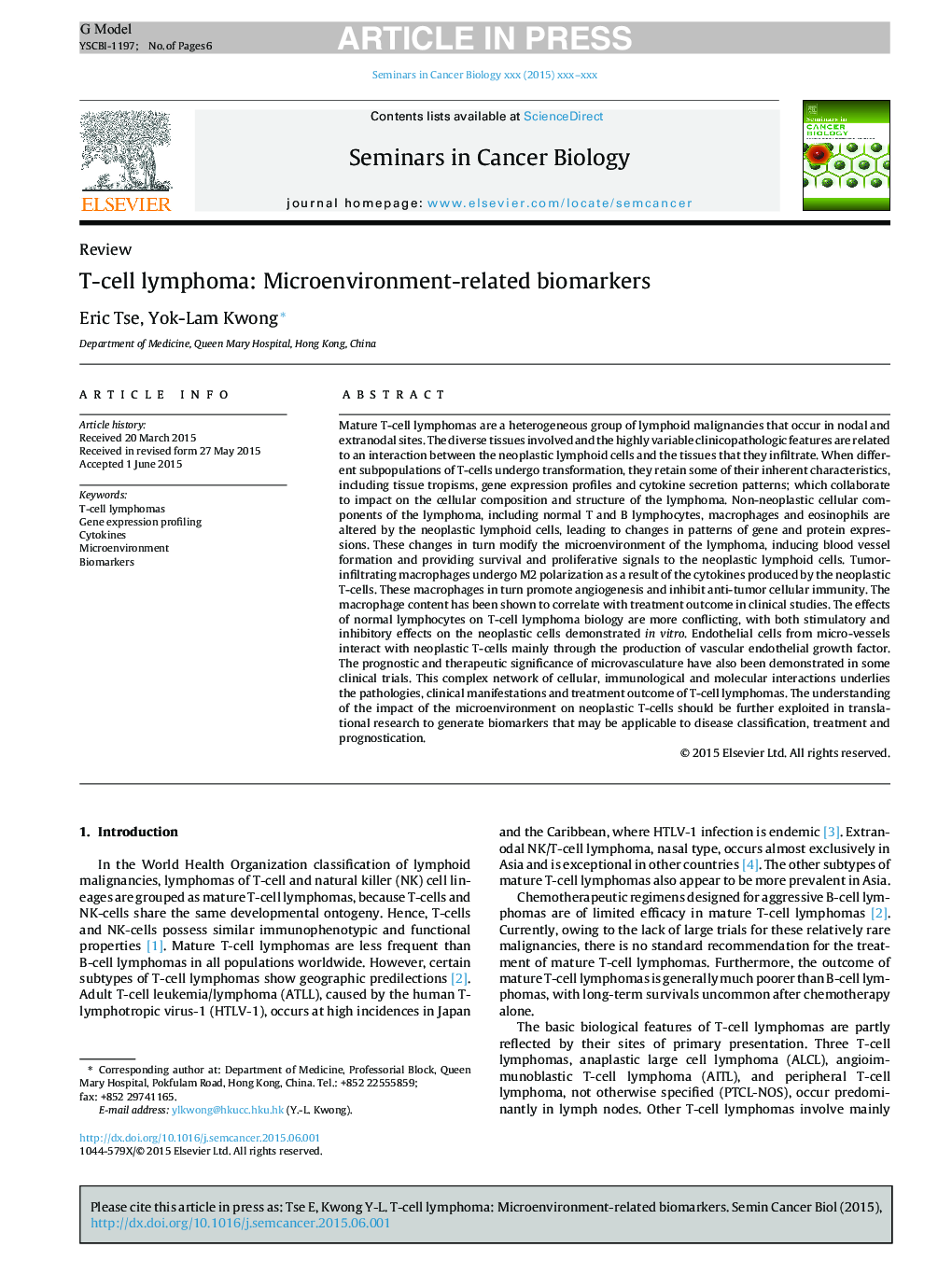| Article ID | Journal | Published Year | Pages | File Type |
|---|---|---|---|---|
| 8362232 | Seminars in Cancer Biology | 2015 | 6 Pages |
Abstract
Mature T-cell lymphomas are a heterogeneous group of lymphoid malignancies that occur in nodal and extranodal sites. The diverse tissues involved and the highly variable clinicopathologic features are related to an interaction between the neoplastic lymphoid cells and the tissues that they infiltrate. When different subpopulations of T-cells undergo transformation, they retain some of their inherent characteristics, including tissue tropisms, gene expression profiles and cytokine secretion patterns; which collaborate to impact on the cellular composition and structure of the lymphoma. Non-neoplastic cellular components of the lymphoma, including normal T and B lymphocytes, macrophages and eosinophils are altered by the neoplastic lymphoid cells, leading to changes in patterns of gene and protein expressions. These changes in turn modify the microenvironment of the lymphoma, inducing blood vessel formation and providing survival and proliferative signals to the neoplastic lymphoid cells. Tumor-infiltrating macrophages undergo M2 polarization as a result of the cytokines produced by the neoplastic T-cells. These macrophages in turn promote angiogenesis and inhibit anti-tumor cellular immunity. The macrophage content has been shown to correlate with treatment outcome in clinical studies. The effects of normal lymphocytes on T-cell lymphoma biology are more conflicting, with both stimulatory and inhibitory effects on the neoplastic cells demonstrated in vitro. Endothelial cells from micro-vessels interact with neoplastic T-cells mainly through the production of vascular endothelial growth factor. The prognostic and therapeutic significance of microvasculature have also been demonstrated in some clinical trials. This complex network of cellular, immunological and molecular interactions underlies the pathologies, clinical manifestations and treatment outcome of T-cell lymphomas. The understanding of the impact of the microenvironment on neoplastic T-cells should be further exploited in translational research to generate biomarkers that may be applicable to disease classification, treatment and prognostication.
Related Topics
Life Sciences
Biochemistry, Genetics and Molecular Biology
Biochemistry
Authors
Eric Tse, Yok-Lam Kwong,
